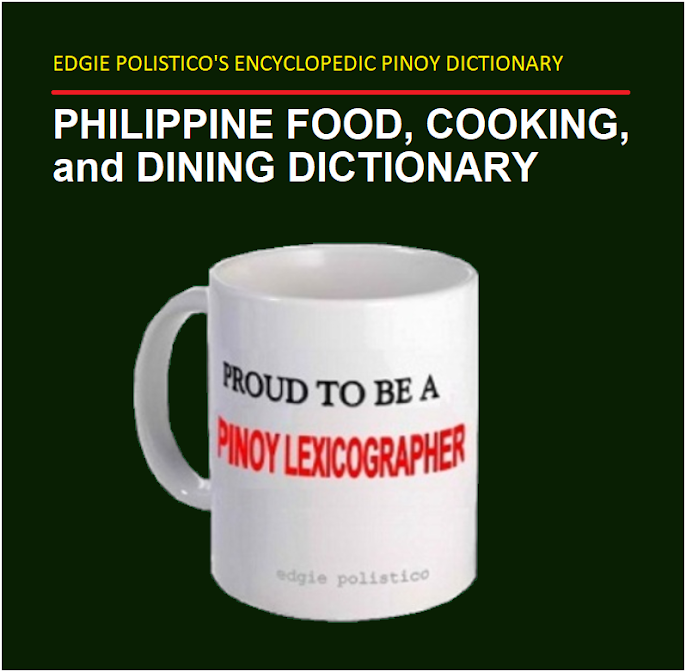 |
Humba cooked by a relative in Inopacan, Leyte.
Other local names:
This is a dish of chunky slices of pork, complete with those wobbly thick layers of pork fat and skin.
- a.k.a. humba Bisaya in Cebuano
- umba in Capampangan
This is a dish of chunky slices of pork, complete with those wobbly thick layers of pork fat and skin.
To cook, the chunks and fatty slabs of pork are braised in a mixture of vinegar, soy sauce, water, spices (crushed garlic, peppercorn and laurel leaves, etc.), and salt to taste. It is simmered for long hours until the oil from pork fat would exude and blend in the gravy. The meat must be very tender with the pork fat having a jelly-like consistency that would easily wobble when you shake the dish, and when you prick or press it with a fork or table knife, the tines or blunt blade would effortlessly sink into the skin and fat.
There are now many variations of humba across the country depending on what ingredients are available. In some places of northeastern Mindanao, eastern Visayas, and Laguna, humba is seasoned with tahure, and tausi, and added with skinned peanuts. The Visayans would add peanuts and a spoonful of brown sugar to enhance the texture of every bite and taste.
The humba of Warays in the eastern Visayas has the skin of pork removed before cooking, leaving only the fatty layer and meat in the pot. Skinned peanuts are also added.
 |
| A tray of humba sold at an eatery in Panabo City. |
Humba is also savored in Luzon that an old version of humba called umba by the Capampangans of Central Luzon (particularly the provinces of Pampanga and Tarlac) and Tagalog region including Metro Manila. Humba in Luzon is cooked with chunks of cracked panocha (concave mold of raw cane sugar) or many spoonfuls of muscovado sugar to enhance the taste. They would also use crushed tahure (salted bean curd) or tausi (black beans) instead of toyo (soy sauce). They also add peanuts, kinchamsay (dried banana blossom), and/or ripe saba banana.
Some local Chinese restaurants in Metro Manila originally add kinchamsay to this dish.
Some local Chinese restaurants in Metro Manila originally add kinchamsay to this dish.
In Iba, Zambales, humba has chunks or big slices of very ripe saba banana (Philippine plantain).
Reheating the humba for several days (at least for 2 to 3 days) on low fire for at least an hour and occasionally turning over the meats would render the dish more flavorful, more tender, and tastier. When reheating, a little more water mixed with little more vinegar and soy sauce may be added to keep the dish saucy and the meat from getting fried by the pork lard. The more humba is reheated, the more delectable it would be.
Learn to cook with this simple humba recipe
All photos by Edgie Polistico are copyrighted. ALL RIGHTS RESERVED.
If you liked this post, share it.
Let us know your opinion on the subject. Feel free to comment in the comment section, below. It is important for us to know what you think.
Tell us what other topics you would like us to write, share, and discuss.
For more about Filipino food, see this Philippine Food, Cooking, and Dining Dictionary. It is OPEN and FREE.
Continue to follow my blogs. You can also follow and learn more by joining us in our Facebook group. Have more bits and pieces about our kind of food, ingredients, and ways of cooking, dining, and knowing food culture across the 7,641 islands of the Philippines.
Encouragement and enthusiasm are not enough. I also need moral support, prayers, and anything else that can uplift my spirit and keep my good reasons. Keep them coming. All I know is that I am happy with what I am sharing and giving away. If you are pleased and happy with what I am doing, just smile and please share the happiness. Keep sharing and include to share the PHILIPPINE FOOD ILLUSTRATED. I feel energized when my blog becomes one of the reasons why you are happy and smiling.
Edgie Polistico






